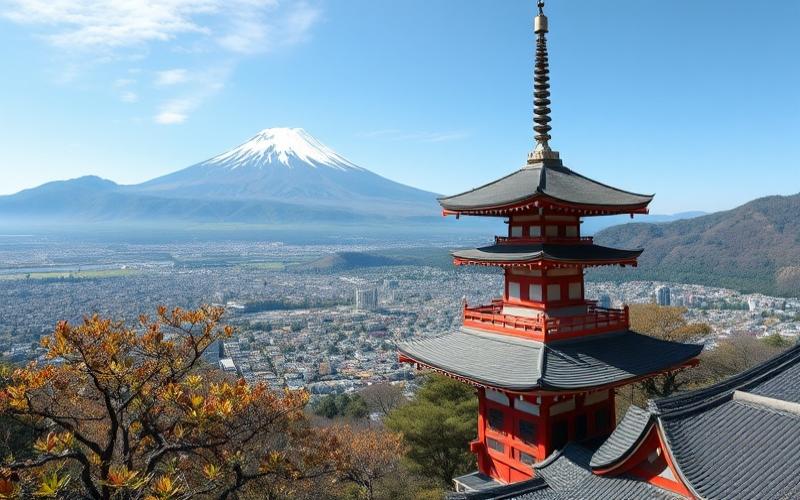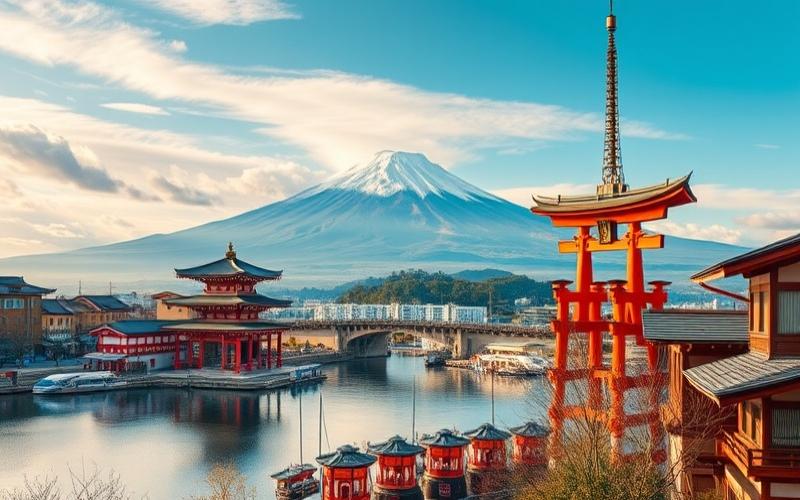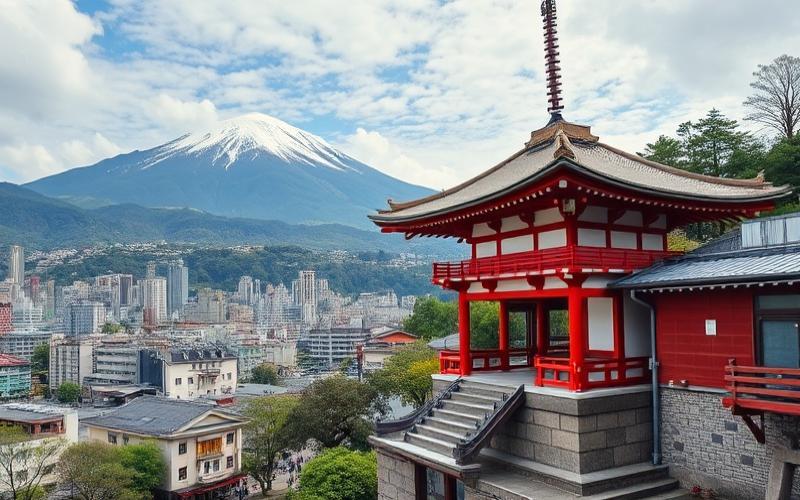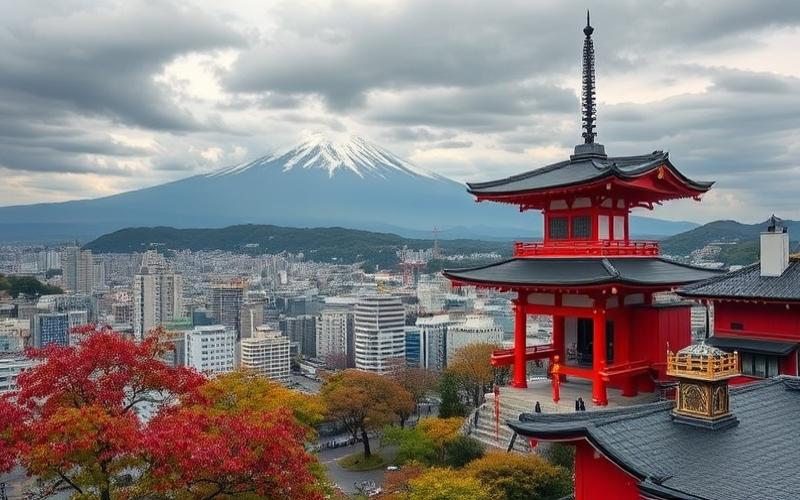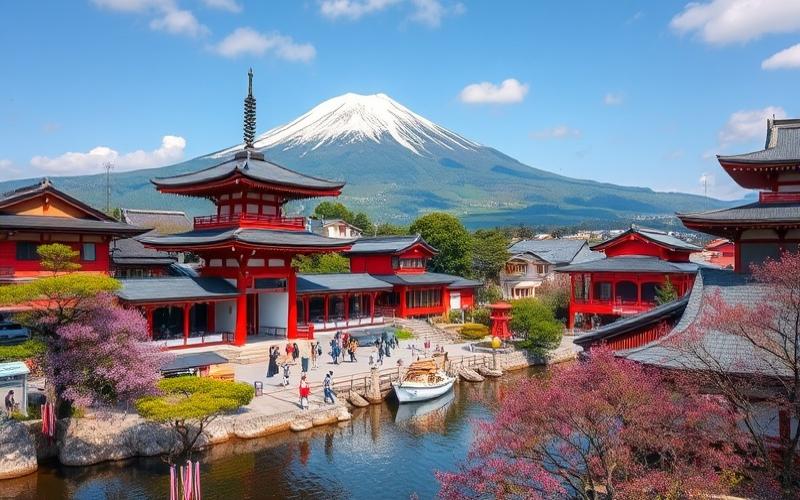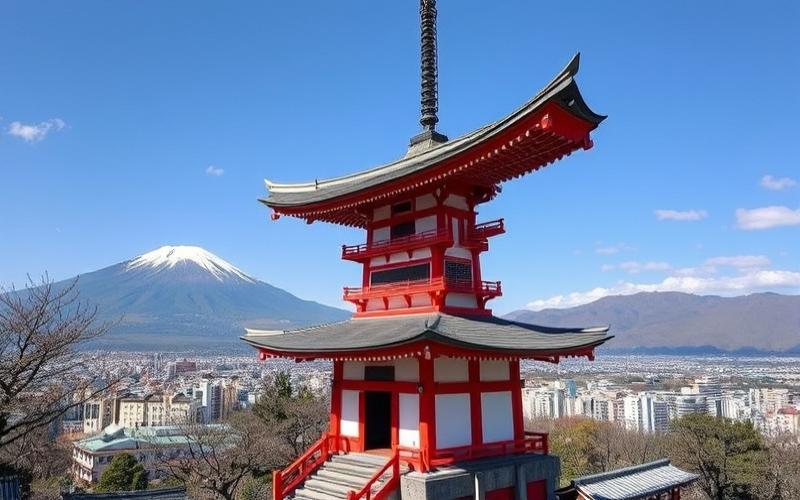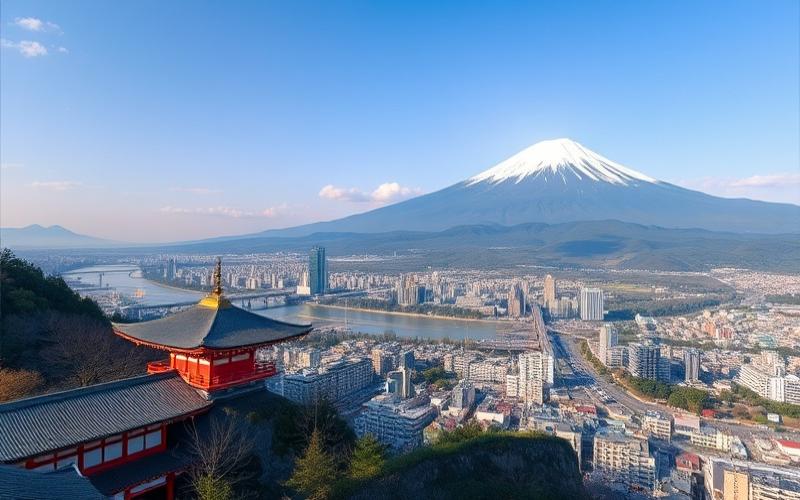
 Published on and written by Cyril Jarnias
Published on and written by Cyril Jarnias
Japan, known for its efficiency and rigor across many sectors, places great importance on workplace safety, a crucial aspect for ensuring employee well-being and maintaining high productivity standards. Occupational safety obligations are governed by strict legislation and a set of rigorous practices, aimed at minimizing risks and promoting a safe and healthy work environment. This article explores the various aspects of Japanese regulations, the role of employers, and employee commitment, offering a comprehensive overview of the measures implemented to transform workplaces into safe spaces.
Key Workplace Safety Standards in Japan
Overview of the Industrial Safety and Health Act
In Japan, to ensure workplace safety, the main law applied is the “Industrial Safety and Health Act (Anzen Eisei Hou).” This law was enacted in 1972 and has the following objectives:
- Establish standards for preventing risks to workers and clarify the responsibility system.
- Promote autonomous activities by companies and planned measures to prevent industrial accidents.
- Encourage the creation of a comfortable work environment.
This law also stipulates that employers have the obligation to take necessary measures for managing the health, life, and safety of employees.
Roles and Responsibilities of Employers and Employees
- Employer:
- Appoint specialized managers such as safety or health managers and establish a safety management system.
- Arrange the work environment (ventilation, lighting, etc.) and eliminate risk factors.
- Take prompt and appropriate measures in case of an industrial accident.
- Employee:
- Participate in safety education and follow company guidelines.
- Cooperate in risk prediction training (KYT) and use the near-miss reporting system.
Specific Accident Prevention Protocols
- Installation of warning signs in hazardous areas and mandatory use of protective equipment.
- Inspection of equipment and machinery before and after work.
In certain industries, there are examples of introducing fail-safe safety technologies.
Hygiene Standards and Regular Inspections
In the workplace, the following are also strictly managed:
- Health checkups: mandatory regular medical examinations for employees (especially at sites handling harmful substances).
- Workplace visits: inspect the entire site at a determined frequency and improve any deficiencies.
Education and Training System
Training for new employees and training during task changes are organized. Toyota Motor Corporation has introduced a hazard experiential learning program using virtual reality technology. This aims to improve risk prediction capabilities.
Concrete Example: Case of Toyota Motor Corporation
The company promotes the following activities based on the pillars of “developing people,” “developing work,” and “developing environment”:
- Company-wide field surveys and improvement proposal meetings
- Prevention through the dissemination of videos reenacting past accidents
These methods are also reference examples for other companies.
This concludes the analysis of the rules applied in Japan and their implementation conditions. A significant reduction in accidents is possible by improving the efficiency of cooperation for compliance with standards and changing daily mindsets.
Good to Know:
In Japan, the Industrial Safety and Health Act imposes strict standards to ensure worker protection, requiring employers to provide a safe and healthy environment. Regulations vary by industry, with specific standards for construction, manufacturing, or the chemical industry. Employers must implement accident prevention protocols and organize regular training to raise employee awareness of specific risks and safety measures. Regular workplace inspections by competent authorities ensure compliance with these standards, and systems such as safety management systems, already in place in many companies, have significantly reduced accident rates. For example, in the automotive industry, collaborative robots are used to minimize injury risk. Workplace hygiene is also prioritized, with clear guidelines on cleanliness and hazardous substance management, thereby reinforcing overall employee safety on a daily basis.
OSHA Regulations and Their Impact on Workplace Safety
1. A Brief History of OSHA Regulation in the United States and Its Scope
In 1970, the Occupational Safety and Health Act was enacted in the United States, and OSHA (Occupational Safety and Health Administration) was established based on this. This law first established comprehensive regulations aimed at ensuring a safe and healthy work environment, applying to all 50 states under federal jurisdiction as well as private sectors and certain public agencies in U.S. territories. It primarily aims to protect workers and requires employers to comply with safety and health standards.
2. Main Objectives of OSHA Regulations Regarding Workplace Safety
OSHA regulations aim to:
- Reduce workplace injuries, illnesses, and fatal accidents.
- Support the improvement of work environments.
- Provide safety education and training programs.
These aim to improve safety through collaboration between workers and employers.
3. Comparison of Workplace Safety Standards Between Japan and the United States: Similarities and Differences
Similarities:
- Both countries have established strict standards to counter exposure to harmful substances, such as chemical management.
- Obligation for employers to conduct risk assessments.
Differences:
- Japan has detailed special regulations based on the “Industrial Safety and Health Act” (e.g., dust regulations, organic substance regulations), while in the U.S., they are managed under a unified subpart form.
- In the U.S., certain forms of employment, such as self-employed workers, are not included in the scope, whereas Japan has broader coverage.
4. Advantages and Limitations of OSHA Regulation
Advantages:
- Concrete results in reducing industrial accidents (62% decrease in fatality rate).
- Support for businesses through clear guidelines.
Limitations:
- Inadequate adaptation for self-employed and precarious workers.
- Reliance on a coercive approach, which may lead to a lack of flexibility at certain operational levels.
5. Examples of Positive Influences on the Work Environment in the United States
After introducing guidelines to prevent falls in the construction industry, many lives were saved. Furthermore, in factories, strengthening standards for handling toxic substances led to a significant reduction in poisoning cases. Additionally, after introducing educational programs, an improvement in safety awareness was observed.
6. Discussion on Improvement Proposals in Japan According to OSHA Principles
In Japan, it is possible to adopt workplace risk analysis systems and strengthen statistical data collection methods following the OSHA approach. This could also help promote a self-management model. However, harmonization with Japan’s unique culture remains a challenge.
7. Japanese Expert Opinions: On the Possibility of Adaptation
Experts express concerns about how to meet Japan’s specific needs, such as “flexible adaptation to each individual task.” On the other hand, they favorably evaluate the high transparency and standard-setting methodology and propose adopting certain measures.
Good to Know:
OSHA regulations, established in the United States in 1970, aim to ensure worker safety and health through strict occupational risk prevention standards. They primarily focus on reducing workplace accidents, improving safety conditions in businesses, and holding employers accountable. Compared to Japanese standards, OSHA regulations are more centralized and comprehensive, while Japan favors a framework based on consultation and cultural traditions in safety. OSHA has demonstrated positive impacts with a notable reduction in workplace incidents, illustrated by the decline in fatal accidents in the United States. Despite this, some criticisms point to a sometimes rigid approach. Adapting OSHA principles to Japan could strengthen Japanese companies’ awareness of proactive safety, especially as Japanese experts highlight the potential interest in more structured American guidelines in certain sectors. However, full integration would require adapting regulations to Japan’s unique cultural and legislative context.
The Importance of Personal Protective Equipment for Japanese Workers
1. Position of PPE in Japan’s Workplace Safety Regulations
In Japan, the Industrial Safety and Health Act forms the basis for protecting worker safety and health. This law imposes on employers the obligation to provide a safe and healthy work environment and includes the selection, provision, and proper use of PPE. In 2024, the appointment of a manager responsible for wearing protective equipment became mandatory, particularly strengthening the response to chemical-related risks. This manager is responsible for worker education and equipment management, thereby contributing to improved safety conditions.
2. PPE Commonly Used in Japan and Characteristics by Industry
Required PPE varies by sector. For example:
| Sector | Equipment |
|---|---|
| Construction Industry | Hard hats, safety shoes, high-visibility vests |
| Manufacturing Industry | Dust masks, earplugs, cut-resistant gloves |
| Medical Field | Protective suits, face shields, gloves |
This equipment is used to protect against physical hazards and infection risks.
3. Reduction of Workplace Accidents and Safety Improvement Through PPE
Proper use of PPE helps reduce harm in case of an accident. For example, wearing a full-body harness during work at heights significantly reduces the risk of fatal injuries from falls. Moreover, as part of COVID-19 measures, providing N95 masks to healthcare workers was crucial for preventing infections.
4. Campaigns Promoting PPE Use
Government agencies and companies actively conduct awareness activities. For example, during the Occupational Safety Week campaign led by the Ministry of Health, Labour and Welfare, education on correct wearing methods and storage conditions was encouraged. Additionally, in large companies, regular training and poster displays are organized as awareness activities.
5. Development of New Equipment Through Technological Innovation
Recently in Japan, the development of products improving comfort and efficiency through technological innovation is progressing. For example, there are helmets with enhanced ventilation performance and dust masks that maintain comfort over long periods. Furthermore, some manufacturers are beginning to introduce harnesses equipped with IoT technology.
6. Challenges and Opportunities: Toward Further Improvement in Usage
Among the often-mentioned challenges are:
- Lack of effective and comfortable designs
- Incomplete or incorrect use due to lack of education
Meanwhile, dissemination efforts continue, including support measures for small and medium-sized enterprises, supported by the introduction of new regulations (e.g., the 2024 amendment) and institutional improvements.
Good to Know:
In Japan, workplace safety regulations are rigorously framed by the Industrial Safety and Health directive, requiring companies to provide appropriate personal protective equipment (PPE) to their employees. Commonly used PPE includes hard hats, gloves, protective glasses, and respiratory masks, each type selected based on specific risks encountered in various sectors such as construction, manufacturing, and the chemical industry. Effective use of PPE has significantly reduced the number of workplace accidents, thereby improving safety conditions. Campaigns, like those from the Japanese Ministry of Health, Labour and Welfare, actively promote the importance of PPE, while technological innovation has led to the development of new, more ergonomic and high-performance equipment, such as smart helmets with integrated safety sensors. Health and safety experts emphasize that, despite progress, challenges remain, particularly regarding the continuous adaptation of PPE to new forms of risks and small business compliance with guidelines, thus offering opportunities to further improve the integration and effectiveness of PPE.
Disclaimer: The information provided on this website is for informational purposes only and does not constitute financial, legal, or professional advice. We encourage you to consult qualified experts before making any investment, real estate, or expatriation decisions. Although we strive to maintain up-to-date and accurate information, we do not guarantee the completeness, accuracy, or timeliness of the proposed content. As investment and expatriation involve risks, we disclaim any liability for potential losses or damages arising from the use of this site. Your use of this site confirms your acceptance of these terms and your understanding of the associated risks.

